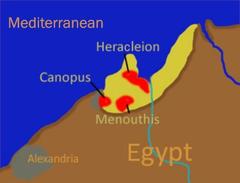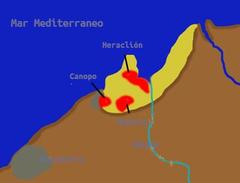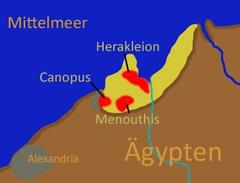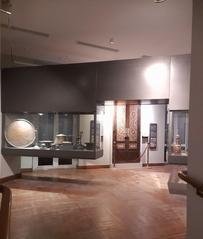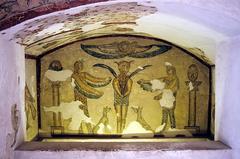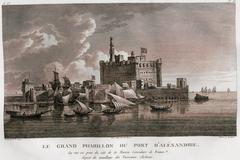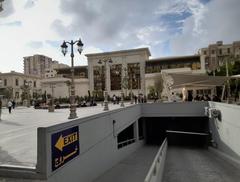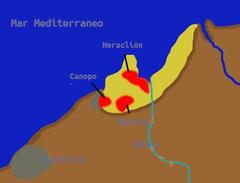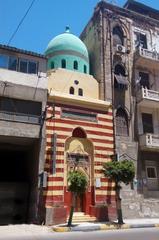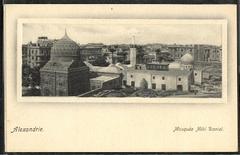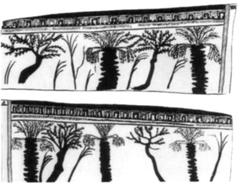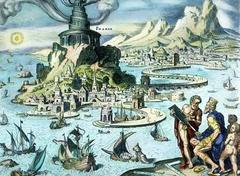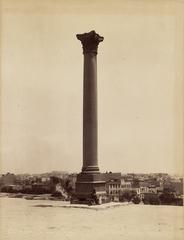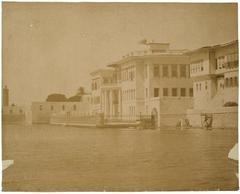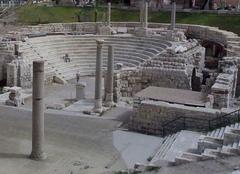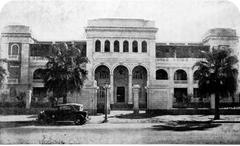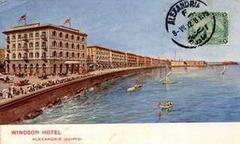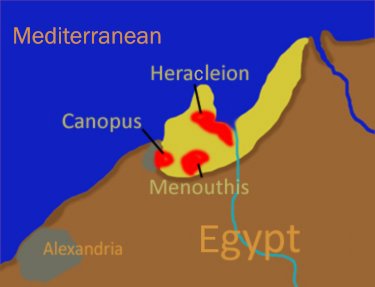
Canopus Alexandria: Visiting Hours, Tickets & Comprehensive Historical Guide
Date: 14/06/2025
Introduction
Beneath the sparkling waters of Abu Qir Bay near Alexandria lies the submerged ancient city of Canopus—a crossroads of Egyptian, Greek, and Roman civilizations. Once a thriving metropolis famed for its temples, festivals, and bustling trade, Canopus is now a fascinating underwater archaeological site that offers a unique window into Egypt’s cosmopolitan past. Although the city itself is inaccessible to most visitors, museum exhibitions, virtual experiences, and specialized diving tours in Alexandria allow you to explore its legacy. This guide provides in-depth historical insights, practical visitor information, and essential travel tips for discovering Canopus and its cultural significance.
For further details, see the Alexandria National Museum, the European Institute for Underwater Archaeology, and Wikipedia.
Table of Contents
- Historical Overview
- Visiting Canopus Today
- Travel Tips
- Nearby Attractions
- Frequently Asked Questions (FAQ)
- Conclusion & Call to Action
- References and Useful Links
Historical Overview
Origins and Early Development
Canopus emerged in the first millennium BCE as a strategic port along the Canopic branch of the Nile, playing a vital role in trade between Egypt and the Mediterranean. Archaeological evidence traces its earliest occupation to the 26th Dynasty (Saite Period, c. 664–525 BCE), marking a period of Egyptian resurgence and flourishing commerce (Wikipedia; History Egypt).
Hellenistic and Ptolemaic Period
Following Alexander the Great’s conquest in 332 BCE, Canopus became a cosmopolitan center under the Ptolemies, blending Greek and Egyptian traditions. Its proximity to Alexandria made it a favored retreat for elites, noted for its luxury resorts, religious festivals, and industry—especially the production of ointments. The city’s religious life centered on the worship of Serapis, a deity combining Greek and Egyptian elements, and Osiris. The annual Mysteries of Osiris festival featured elaborate boat processions, drawing pilgrims from across the region (Wikipedia).
Religious Significance
Canopus was renowned for its temples and syncretic religious practices. Temples dedicated to Osiris, Serapis, and Heracles underscored its multicultural identity. The Decree of Canopus, a trilingual inscription from 239 BCE, honored the Ptolemaic dynasty and aided the decipherment of ancient Egyptian scripts (Wikipedia). The city’s association with canopic jars—used in mummification—reflects its important role in funerary customs, although such jars were widespread in Egypt.
Roman Era and Decline
Under Roman rule, Canopus retained its status as a center of pleasure, pilgrimage, and trade. Roman authors, including Seneca and Juvenal, described its reputation for luxury. Economic activity continued, evidenced by coinage and jewelry from the period. However, the city’s fortunes declined due to seismic activity and coastal erosion (Wikipedia).
Submergence and Rediscovery
Between the 4th and 8th centuries CE, a series of earthquakes and tidal waves caused Canopus to sink beneath the Mediterranean, where it remained lost for centuries. Systematic underwater exploration began in the 1990s, led by Franck Goddio and the Institut Européen d’Archéologie Sous-Marine (IEASM), revealing monumental ruins, temples, and everyday artifacts (Egypt Independent).
Archaeological Discoveries
Excavations have uncovered:
- Temples, statues, and religious artifacts (including a votive bark of Osiris)
- Gold and bronze coins from the Ptolemaic and Roman eras
- Over 79 shipwrecks and hundreds of anchors, attesting to the city’s maritime importance
- Urban layouts and evidence of city expansion, mapped through advanced geophysical surveys (Journals EKB)
These discoveries have reshaped our understanding of Canopus as a vibrant, multicultural metropolis.
Visiting Canopus Today
How to Visit
Canopus remains submerged and is not accessible on foot. There are three main ways to explore its history:
- Museum Exhibitions: Artifacts from Canopus are displayed at the Alexandria National Museum, the Bibliotheca Alexandrina Museum, and the Roman Theater in Alexandria.
- Diving Tours: Licensed operators organize diving excursions to the underwater site, subject to permit and certification requirements.
- Virtual Experiences: Documentaries, virtual tours, and interactive maps are available online and at certain museums.
Tickets and Opening Hours
- Alexandria Museums: Open daily from 9:00 AM to 5:00 PM. Entrance fees typically range from 60 to 100 EGP for adults, with discounts for students and seniors (nileempire.com; travel2egypt.org).
- Diving Tours: Operate year-round during daylight hours. Prices vary by provider; advance booking and diving certification are required.
Guided Tours and Special Events
- Boat Excursions: Some tours offer boat trips in Abu Qir Bay, providing surface views of the submerged city.
- Combined Tours: Day trips may include Canopus, neighboring Heracleion, and major Alexandria sites for a comprehensive experience (adventure-life.com).
- Events: Museums occasionally host special exhibitions and workshops related to Canopus and Egypt’s underwater heritage.
Accessibility
- For Divers: Underwater tours require certification and good health; not suitable for visitors with mobility challenges.
- For Non-Divers: Museum and virtual experiences are accessible and equipped for visitors with disabilities.
- General Access: The Abu Qir area is best reached by taxi or car from Alexandria (30–45 minutes); public transport is limited (mrandmrsegypt.com).
Travel Tips
- Best Time to Visit: October to April offers the most pleasant weather.
- Clothing: Wear modest, lightweight clothing and comfortable shoes. Sun protection is essential.
- Health & Safety: Use sunscreen, bring bottled water, and keep valuables secure. Solo travelers should avoid isolated areas after dark (gov.uk).
- Payments: Most museums accept credit cards, but carry some cash for tips and small purchases.
- Photography: Allowed in museums; underwater photography requires permission from tour operators.
Nearby Attractions
While exploring Canopus’s legacy, don’t miss these Alexandria highlights:
- Catacombs of Kom El Shoqafa
- Citadel of Qaitbay
- Bibliotheca Alexandrina
- Pompey’s Pillar
- Corniche waterfront promenade
- Ancient city of Heracleion (also submerged, accessible via diving tours)
These sites enrich your understanding of Alexandria’s layered history.
Frequently Asked Questions (FAQ)
Q: Can I visit Canopus directly?
A: The site is submerged and only accessible through certified diving tours. Museums in Alexandria display Canopus artifacts and offer virtual experiences.
Q: What are the museum visiting hours and ticket prices?
A: Most museums open from 9:00 AM to 5:00 PM. Tickets cost 60–100 EGP for adults.
Q: Are there guided tours of Canopus?
A: Yes, both diving and museum tours are available. Book through reputable operators.
Q: What should I wear and bring?
A: Lightweight, modest clothing, closed shoes, sun protection, and water are recommended.
Q: Is Canopus accessible for people with disabilities?
A: Underwater site access is limited, but museums and virtual tours are generally accessible.
Conclusion & Call to Action
Canopus stands as a testament to Egypt’s multicultural past and the enduring wonders preserved beneath the Mediterranean. Whether you’re a history lover, diver, or traveler, exploring Canopus—through museums, specialized tours, or immersive virtual experiences—offers a rare opportunity to connect with a lost world. For the latest updates on visiting hours, tickets, and exclusive events, download the Audiala app and follow us on social media. Embark on your journey through time and discover the submerged marvels of Canopus.
References and Useful Links
- Alexandria National Museum
- European Institute for Underwater Archaeology
- Canopus, Egypt - Wikipedia
- Egypt Independent: New findings excavated in submerged ancient cities Heracleion and Canopus
- Journals EKB
- Mr & Mrs Egypt
- History Egypt: Canopus
- Trek Zone
- The Egyptian Traveler
- Egypt Tours Plus: Visiting Alexandria
- Nile Empire
- Travel2Egypt
- Adventure Life
- Gov.uk: Egypt Travel Advice
- Alexandria Tourism Board
- Bibliotheca Alexandrina
- Alexandria Centre for Maritime Archaeology & Underwater Cultural Heritage (CMAUCH)
Visuals and maps are recommended to enhance your planning and understanding. For virtual tours and more images, visit the Alexandria Tourism Board website.
